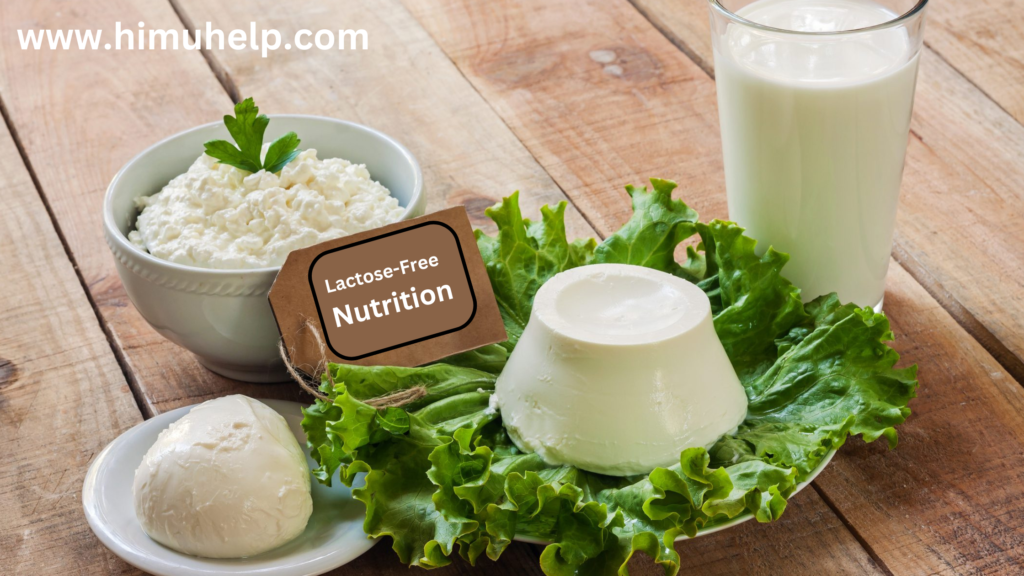Introduction
Lactose intolerance affects millions worldwide, causing digestive discomfort when consuming dairy products. If you’re one of them, don’t worry—you don’t have to give up on delicious and nutritious foods! With smart swaps and essential tips, you can maintain a well-balanced diet without lactose. Let’s dive into nine simple ways to make lactose-free nutrition easy and enjoyable.
Tip #1: Choose Lactose-Free Dairy Alternatives
Dairy products are a staple in many diets, but there are plenty of lactose-free alternatives.
Best Plant-Based Milk Options
Almond milk – Light and slightly nutty, great for smoothies.
Oat milk – Creamy texture, perfect for coffee and cereals.
Soy milk – High in protein, a great all-around substitute.
Coconut milk – Rich and flavorful, ideal for curries and desserts.
How to Pick the Right Substitute
- Look for unsweetened versions to avoid extra sugar.
- Opt for fortified options with calcium and vitamin D.
- Test different types to see which suits your taste and digestion best.
Tip #2: Read Labels Carefully
Even seemingly lactose-free foods can have hidden dairy ingredients.
Hidden Sources of Lactose
Processed foods like salad dressings, baked goods, and chips.
Medicines and supplements may contain lactose as a filler.
Protein powders often have whey, which contains lactose.
How to Identify Dairy Ingredients
- Look for terms like whey, casein, curds, and milk solids on ingredient lists.
- Products labeled “non-dairy” may still contain casein, a milk derivative.
- Choose “lactose-free” certified items to be safe.
Tip #3: Get Enough Calcium & Vitamin D
Eliminating dairy can put you at risk of calcium and vitamin D deficiency.
Non-Dairy Sources of Calcium
Leafy greens like kale and collard greens.
Almonds and chia seeds.
Canned salmon and sardines (with bones).
Importance of Fortified Foods
Many plant-based milks, cereals, and orange juices are fortified with calcium and vitamin D, making them excellent dairy-free alternatives.
Unlock the Truth: Is Organic Food Worth It? Click Here!
Tip #4: Try Lactase Enzyme Supplements
Some people can still enjoy small amounts of dairy with the help of lactase supplements.
How Lactase Helps Digestion
Lactase is an enzyme that breaks down lactose, helping prevent bloating, gas, and discomfort.
Who Should Consider Enzyme Supplements?
- People with mild to moderate lactose intolerance.
- Those who want to occasionally enjoy cheese, ice cream, or milk.
Tip #5: Opt for Naturally Dairy-Free Foods
Why worry about lactose when so many natural foods are already dairy-free?
Whole Foods That Are Lactose-Free
Fruits and vegetables
Rice, quinoa, and legumes
Meat, poultry, and eggs
The Benefits of Unprocessed Options
Unprocessed foods don’t have hidden lactose or additives, making them a safer and healthier choice.
Tip #6: Be Mindful of Cross-Contamination
Even if a food is dairy-free, cross-contact can still happen.
Eating Out Safely
- Ask if dishes contain butter, cheese, or cream.
- Request food to be cooked separately from dairy products.
How to Prevent Accidental Lactose Consumption
- Use separate utensils at home.
- Choose restaurants with clear allergen labeling.
Tip #7: Experiment with Fermented Dairy
Not all dairy is created equal—some fermented options contain minimal lactose.
How Fermentation Reduces Lactose
The fermentation process breaks down lactose, making foods like yogurt and aged cheese easier to digest.
Best Low-Lactose Dairy Choices
Aged cheeses like cheddar and parmesan.
Greek yogurt with live cultures.
Tip #8: Replace Butter with Healthier Alternatives
Butter contains lactose, but swapping it out is easy.
Best Non-Dairy Butter Swaps
Avocado: creamy and full of healthy fats.
Coconut oil: great for baking and cooking.
Nut butter: Delicious on toast and smoothies.
Cooking Without Butter
- Use olive oil for sautéing.
- Try mashed bananas for baking.
Tip #9: Find Lactose-Free Protein Sources
Dairy-based proteins like whey can be tricky, but there are great alternatives.
Animal vs. Plant-Based Protein
Chicken, eggs, and fish provide lactose-free protein.
Lentils, beans, and tofu are plant-based options.
Smart Swaps for Whey Protein
Pea protein or soy protein powders.
Brown rice protein for smoothies.
Conclusion
Living a lactose-free lifestyle doesn’t mean sacrificing taste or nutrition. With these nine essential tips and smart swaps, you can enjoy a well-balanced diet without discomfort. By choosing the right alternatives, reading labels, and incorporating nutrient-rich foods, you’ll make lactose-free eating both simple and delicious!
FAQs
1. What are the symptoms of lactose intolerance?
Common symptoms include bloating, gas, diarrhea, and stomach cramps after consuming dairy.
2. Can I eat cheese if I’m lactose intolerant?
Yes! Aged cheeses like cheddar and parmesan have very little lactose.
3. Are eggs dairy?
No, eggs come from chickens, not cows, and are completely lactose-free.
4. Is almond milk a good substitute for dairy milk?
Yes, almond milk is a great option, especially when fortified with calcium and vitamin D.
